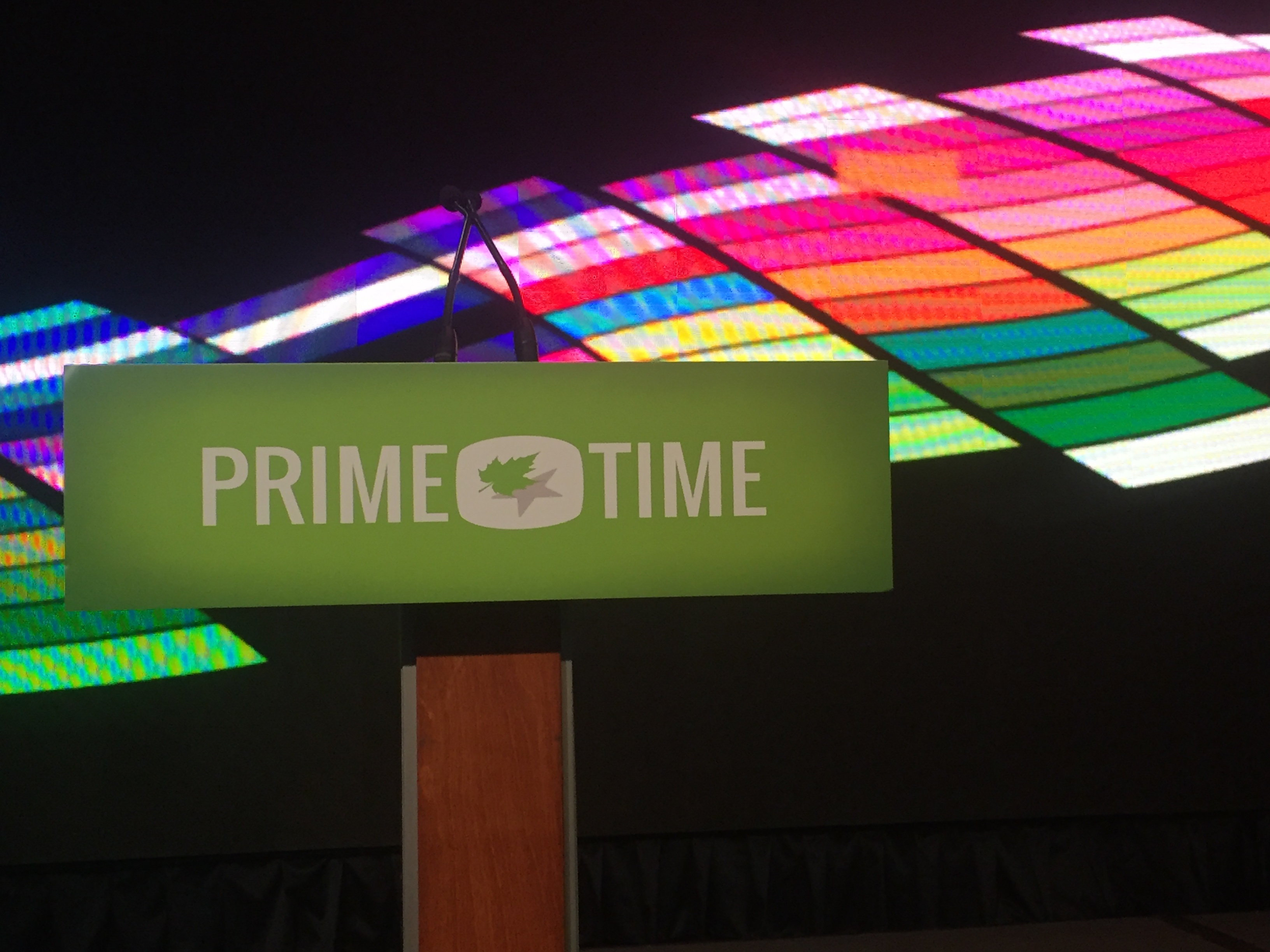Prime Time ’17: What’s the key to export success?
Panelists tackled partnering with distributors early and looking to niche European SVODs, while Melanie Joly talked about removing red tape and working with China.

In his opening remarks at Prime Time in Ottawa, CMPA president and CEO Reynolds Mastin told delegates that an “eye-popping” $3.5 billion in Canadian film and TV was exported last year.
With the export and discoverability of Canadian content a focus of the industry – not to mention Minister Melanie Joly’s Cancon consultations – the CMPA gathered a panel of Canadian and international industry experts to discuss best practices for getting local content in front of global audiences.
“The real question is how can we get [that $3.5 billion] to double, triple?” asked CMF president and CEO Valerie Creighton, who moderated the Accelerating Export panel.
While he admitted he has skin in the game, Cineflix president Peter Emerson said one way to increase export potential is by partnering with a distributor early.
Speaking to producers directly, he said, “We can help you, from day one, negotiate with your primary broadcaster making sure that the deal is structured in a way that supports export.” While he was careful to qualify his statement, he argued that in some cases, broadcasters that retain rights to series may not be interested in selling a producer’s show to other markets because “the last thing they want is one of their hit shows showing up on another network.”
Of course, we need to have shows before they can be distributed, added Jocelyn Hamilton, president, Canada, Entertainment One Television. And while she said there has never been better television coming out of this country, in a 400-plus scripted series universe, it’s becoming harder and harder to stand out. Packaging of series – big name talent, for example – has therefore become increasingly important, she said.
With that comes increased budgets, as well as increased deficits. “More and more we have to be there at the pre-buy stage, bringing in from around the world upfront to be part of our shows, which is great, but it’s very difficult and very competitive. And we have to be playing our best game,” she said.
On the note of increasing production budgets, Emerson once again noted producers can get the most money for their IP by bringing a distributor on board early.
“Some of you lucky people are going to get orders in the next few months from the Canadian broadcasters and that’s the day you’re going to call me and say, ‘I need $700,000.’ And you know what? I could’ve been working with you, I could’ve been talking to the European broadcasters, I could’ve been talking to potential partners, I could’ve been getting people excited about your IP at a point when I can get the most amount of money for it. Once it’s made, oddly, it’s worth less than what it could be sold for on paper. That’s when you get the $3 million,” he said.
On the topic of SVODs, Wendy Bernfeld, founder of European licensing consultancy Rights Stuff told delegates the timing could not be better for Canadians to sell content in Europe, specifically to SVODs. While thousands of SVODs exist, she said there are about 40 to 70 platforms that will pay a flat fee to license a library or put money upfront to commission from scratch.
She said the most common deals are non-exclusive and for library content between two and five years old. While she said deals vary depending on program, genre, first or second window, SVOD buyer and other factors, “modest pricing of older library [can range] from $1,000 to $2,000 a title or episode for each window, each deal and country.” She added that’s in addition to other nonexclusive buyers and windows like TVOD, AVOD and traditional.
Jamie Otero, head of marketing and business Development at RightsTrade, an online marketplace for film and TV agreed that there are a lot of new SVOD players in central and Eastern Europe specifically. He added that the other major trend he’s seeing now is there are a lot of offerings that are very content specific, such as an SVOD that caters to 18- to 24-year-olds and is focused on sci-fi. He said its helpful then for producers to be as “granular as possible” not just in listing their available rights but in the metadata that describes their content and target demo, so as to sell that content more easily.
Closing out day one of the conference was a keynote discussion between Mastin and Minister of Canadian Heritage Melanie Joly, in which she told delegates her cultural export strategy will be released in 2017, though few details were given as to what that strategy will look like.
She also added that during her visit to China last month she met with her counterpart to discuss easing trade between the two countries. “We both agreed on the importance of opening our markets and collaborating politically to ease opening up these markets. We both have at heart growing our GDP in the creative industries,” she said.
To that end, she created an export advisory committee with members from Cirque du Soleil, IMAX, Sheridan College and Minority Media, among others.
The discussion also turned to the topic of tax credits and incentives, to which Joly stated she wants to make the process easier for producers.
“We can do better when it comes to the overall paperwork and administration that is very difficult to deal with,” she said. ” I want to make sure there is less red tape in any future policy that will be coming up.”

 The definitive CDN broadcast and production resource.
The definitive CDN broadcast and production resource.










